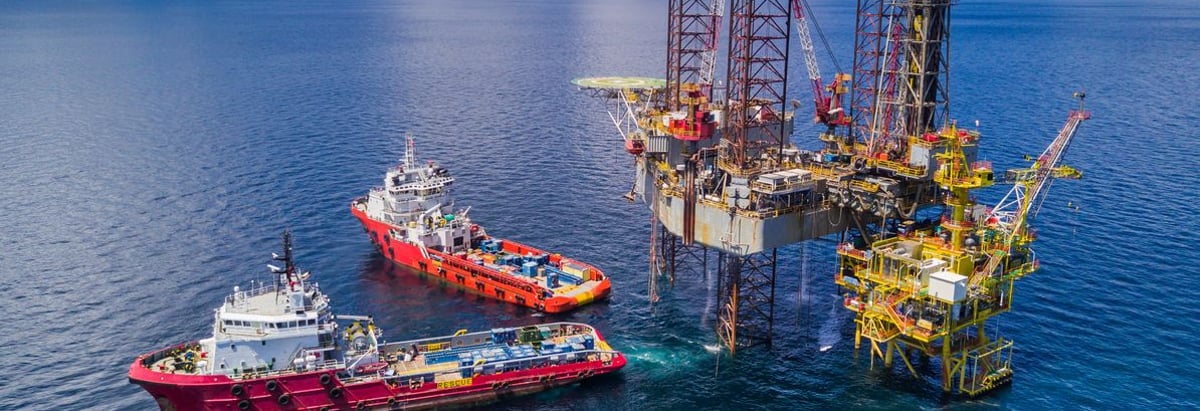- United States
- /
- Oil and Gas
- /
- NasdaqGS:PDCE
Does PDC Energy, Inc.'s (NASDAQ:PDCE) Debt Level Pose A Problem?

Small-caps and large-caps are wildly popular among investors, however, mid-cap stocks, such as PDC Energy, Inc. (NASDAQ:PDCE), with a market capitalization of US$2.9b, rarely draw their attention from the investing community. Despite this, commonly overlooked mid-caps have historically produced better risk-adjusted returns than their small and large-cap counterparts. This article will examine PDCE’s financial liquidity and debt levels to get an idea of whether the company can deal with cyclical downturns and maintain funds to accommodate strategic spending for future growth. Remember this is a very top-level look that focuses exclusively on financial health, so I recommend a deeper analysis into PDCE here.
Check out our latest analysis for PDC Energy
PDCE’s Debt (And Cash Flows)
PDCE has sustained its debt level by about US$1.2b over the last 12 months which accounts for long term debt. At this stable level of debt, PDCE's cash and short-term investments stands at US$1.4m to keep the business going. Moreover, PDCE has produced US$889m in operating cash flow in the last twelve months, resulting in an operating cash to total debt ratio of 74%, indicating that PDCE’s operating cash is sufficient to cover its debt.
Can PDCE pay its short-term liabilities?
With current liabilities at US$441m, the company may not be able to easily meet these obligations given the level of current assets of US$274m, with a current ratio of 0.62x. The current ratio is calculated by dividing current assets by current liabilities.

Can PDCE service its debt comfortably?
With debt reaching 47% of equity, PDCE may be thought of as relatively highly levered. This is not uncommon for a mid-cap company given that debt tends to be lower-cost and at times, more accessible. We can test if PDCE’s debt levels are sustainable by measuring interest payments against earnings of a company. Ideally, earnings before interest and tax (EBIT) should cover net interest by at least three times. For PDCE, the ratio of 1.11x suggests that interest is not strongly covered, which means that debtors may be less inclined to loan the company more money, reducing its headroom for growth through debt.
Next Steps:
Although PDCE’s debt level is towards the higher end of the spectrum, its cash flow coverage seems adequate to meet debt obligations which means its debt is being efficiently utilised. Though its lack of liquidity raises questions over current asset management practices for the mid-cap. Keep in mind I haven't considered other factors such as how PDCE has been performing in the past. I suggest you continue to research PDC Energy to get a more holistic view of the stock by looking at:
- Future Outlook: What are well-informed industry analysts predicting for PDCE’s future growth? Take a look at our free research report of analyst consensus for PDCE’s outlook.
- Valuation: What is PDCE worth today? Is the stock undervalued, even when its growth outlook is factored into its intrinsic value? The intrinsic value infographic in our free research report helps visualize whether PDCE is currently mispriced by the market.
- Other High-Performing Stocks: Are there other stocks that provide better prospects with proven track records? Explore our free list of these great stocks here.
We aim to bring you long-term focused research analysis driven by fundamental data. Note that our analysis may not factor in the latest price-sensitive company announcements or qualitative material.
If you spot an error that warrants correction, please contact the editor at editorial-team@simplywallst.com. This article by Simply Wall St is general in nature. It does not constitute a recommendation to buy or sell any stock, and does not take account of your objectives, or your financial situation. Simply Wall St has no position in the stocks mentioned. Thank you for reading.
About NasdaqGS:PDCE
PDC Energy
PDC Energy, Inc., an independent exploration and production company, acquires, explores for, develops, and produces crude oil, natural gas, and natural gas liquids in the United States.
Undervalued with solid track record.
Similar Companies
Market Insights
Community Narratives





